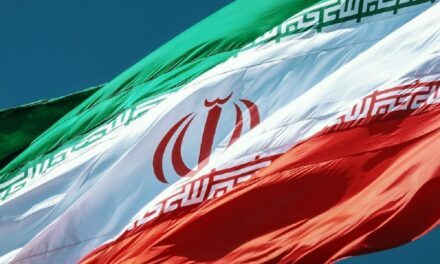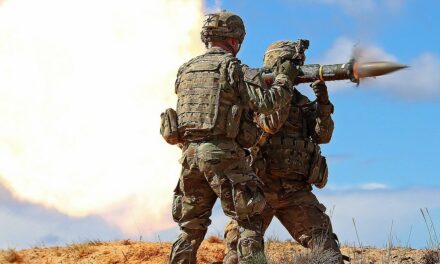We support our Publishers and Content Creators. You can view this story on their website by CLICKING HERE.
Summary: To enhance U.S. military messaging and avoid fostering anti-Asian discrimination, it is crucial to distinguish between the People’s Republic of China (PRC), the Chinese Communist Party (CCP), and the global Chinese diaspora.
Key Points:
-Broadly using “China” as a threat can strengthen CCP narratives and alienate non-CCP Chinese communities.
-Specificity in language, highlighting positive actions of non-CCP Chinese groups, and recognizing Taiwan as an example of a successful, free Chinese society are key strategies.
-This approach prevents misunderstandings and counters the PRC’s narrative while promoting U.S. foreign policy effectively.
Getting the Messaging Right Around the China Challenge: The U.S. Military’s Dilemma
China is not our enemy. The Chinese people are not our enemy, and we need to start using this narrative in our daily messaging.
The term China is often used by the U.S. Military to represent a pacing threat or challenge to the U.S. and its allies. The U.S. Military should be specific to increase accuracy in their language to avoid confusion and misperception.
China is used as a catch-all, mingling the People’s Republic of China (PRC), the Chinese Communist Party (CCP), PRC nationals, and the ethnic diaspora across the globe into the term “China” as one entity.
Mixing the terms or using just one term to refer to all groups weakens U.S. Foreign Policy and strengthens the CCP narrative that they represent all Chinese parties. This usage will also contribute to anti-Asian American discrimination.
The U.S. Military can draw ties from lessons learned during the Global War on Terror (GWOT) in discriminating between radical Islamic terrorists and the Muslim global population. Conversely, the U.S. Military can highlight positive aspects of specific behaviors and actions related to non-CCP Chinese communities and ethnic diaspora.
Department of Defense messaging should take steps to promote the actions or behaviors of non-CCP Chinese groups in messaging to demonstrate the willingness of the U.S. to avoid alienation and misrepresentation.
The Problem
Incorrectly identifying and highlighting “China” as a threat further causes rifts and gaps for the PRC to exploit. Instead of grouping all actions under the term “China,” U.S. government entities should highlight specific entities’ or organizations’ actions as threats.
Specificity in messaging avoids collateral alienation of friendly/pro-U.S. Chinese populations and takes steps to separates malign and positive actions.
For example, according to the Pew Research Center, over 50% of Americans view China as the greatest threat to the U.S. up from 24% in 2019. Obviously, a growing military threat is a concern to the American public.
Using the umbrella term China to capture the growing military threat posed by the PRC creates a narrative that China as a whole, and all Chinese people and entities, should be viewed as the threat. In reality, the aggressive military actions of the PRC do not represent all Chinese. Another example is found in a recent Time article which highlighted that for U.S. Hawks China poses “the greatest threat to Americans’ security, freedom, and prosperity.”
These statements center on the drive to increase our military preparedness against the PRC/CCP. At the same time, they infer that the Chinese as a whole are the threat. This example is found in both media publications and in Department of Defense statements. DOD Policy Chief John C. Rood, Undersecretary of Defense for Policy, stated that “China Poses the Largest Long-Term Threat to U.S.” and “[I]t is not an exaggeration to say China is the greatest long-term threat to the U.S.”
The China Threat Messaging Challenge
These statements continue to proliferate across media, building a strong narrative that China is a threat and our enemy. While this makes for a great soundbite, the lack of specificity creates a problem because it signals to all Chinese that they are considered a threat. This signals to the largest ethnic diaspora in the world that America views them as a threat and provides a rallying cry to the CCP that their actions are justified. Specificity in statements and speeches can ensure clarity and focus.
One should delineate a difference between the PRC and the CCP. The CCP is the governing part of the PRC, but the terms are not identical. The CCP often reinforces a narrative that they are the sole representation of China, Chinese citizens, and the Chinese diaspora. This is not the case. Specificity in language and rhetoric avoids overgeneralizing and assists in recognizing and promoting Chinese actions that are positive. Specificity also illuminates malign acts and behaviors of the CCP. Using the term China broadly damages our narrative and emboldens the CCP as the protectorate of all things Chinese.
According to a PEW Center Research study (Negative Views of China Tied to Critical Views of Its Policies on Human Rights | Pew Research Center) of over 19 countries- 11 from Europe, 2 from North America, 1 from the Middle East, and 5 from Asia- over 68% of adults surveyed had a negative view of the PRC and most associated Chinese actions with the PRC as trending towards unfavorable. Most people predominantly were concerned about the PRC’s rising military power, aggressive actions, and human rights violations. Interestingly, adults in countries describing themselves as ethnically Chinese felt a stronger confidence in the leadership of Xi Jinping. The narrative that the PRC represents all Chinese actions globally remains strongly entrenched.
What GWOT Teaches
There are an estimated 1.4 billion Han Chinese worldwide. This makes up almost 18% of the global population and is the largest ethnic group in the world. Additionally, there are over 55 recognized Chinese ethnic groups globally. Using umbrella terms in rhetoric is, therefore, misleading. Further, illuminating malign actions perpetrated by specific entities demonstrates coercive actions and holds the correct party responsible. The U.S. military should be clear and precise in language when stressing actions or developing capabilities against pacing threats and potential adversaries. Lessons of the GWOT where islamophobia spread like wildfire, causing significant issues and distorting narratives, hurting U.S. efforts, and creating false narratives. These false narratives were used by radicalized terrorists to justify their horrendous acts of terror in the name of their ideological struggle. These lessons from the GWOT should be put into practice as the U.S. now faces threats from revisionist actors and states who seek to undermine current international norms.
The Taiwan Case
While specificity towards negative actions is needed, highlighting positive Chinese actions is also critical to enhancing information. The Republic of China (ROC) on the island of Taiwan, often referred to as just Taiwan, offers an excellent example of a Chinese society whose actions can be highlighted to counter the PRC. The ROC is an example of an alternate Chinese society and government from the PRC and CCP. The government on Taiwan counters the CCP’s one voice – one option narrative and provides an alternate Chinese government and society.
In 1979, the United States moved to recognize the People’s Republic of China (PRC) and de-recognize the Republic of China (ROC). Under the 1979 Taiwan Relations Act (TRA), the United States maintained unofficial relations with Taiwan. While the U.S. refers to Taiwan as a defacto state, on the island of Taiwan the official name remains the Republic of China (ROC). Taiwan is one of the freest democracies in Asia, ranking number one in education, freedom of the press, and human rights, which is a stark contrast from the PRC-controlled mainland. While there is a Taiwanese identity that has grown over the years, the island today represents one of the largest free Chinese societies in existence. A reminder to the world that Chinese people can live, operate, and thrive in the current system. Taiwan demonstrates how a Chinese society can flourish in an interconnected, open global common system and highlights a disparity to the PRC, which offers an authoritarian closed system. Taiwan is a fully functioning democracy, respecting human rights and the rule of law is supportive of the open international system. Taiwan remains a vital partner for the United States and many other countries regionally and globally. Taiwan represents a robust, prosperous, free, and orderly society with strong institutions that stand as a model for the region.
The reminder of this functioning, open, free Chinese society is a thorn in the side of the PRC, who domestically enable strict controls over their population. The PRC maintains that Taiwan is a rogue state belonging to the PRC. However, the ROC government on the self-ruled island of Taiwan does not accept the PRC claims and operates agnostically from the PRC.
Getting the Language Right
Precise language is needed to ensure we are not mistakenly promoting a false narrative and leading to misunderstanding. Delineating specificity with how we represent and articulate Chinese societies, governments, entities, and national groups is critical. Further, highlighting Chinese societies like Taiwan combats the PRC’s messaging and provides an alternative option instead of a threat.
Signaling the United States’ views China, and equally the Chinese, as a threat only bolsters and emboldens the PRC and CCP to pit nations against each other. We should welcome the Chinese people across the globe, whether they be our citizens, green card holders, visitors, or tourists into our open system and signal the threat is not China or the Chinese People. We should learn from our past mistakes of alienating and dividing ethnic groups like we did during the GWOT where misplaced hatred and ignorance of terrorist groups spilled over against Muslim and Arab populations in ways that fueled divisiveness and created misunderstanding. The Taiwan authorities (ROC) provide a competing narrative that can be highlighted to differentiate Chinese actions from the PRC/CCP and offer alternative messaging opportunities.
The U.S. military should exercise specificity in language when labeling a pacing threat, to ensure they are supporting the correct narrative, thereby separating malign actions of specific parties and groups from the overall ethnic diaspora.
About the Author: Justin Woodward
The above work reflects the author’s opinion and does not represent the official policy or position of the Special Forces Regiment, the Department of Defense, or the United States Army.
Major Justin Woodward is a Special Forces officer, a veteran of small wars, and a student of Unconventional Warfare. He has served in the Army and in the Joint Force in various roles for 17 years.

 Conservative
Conservative  Search
Search Trending
Trending Current News
Current News 





